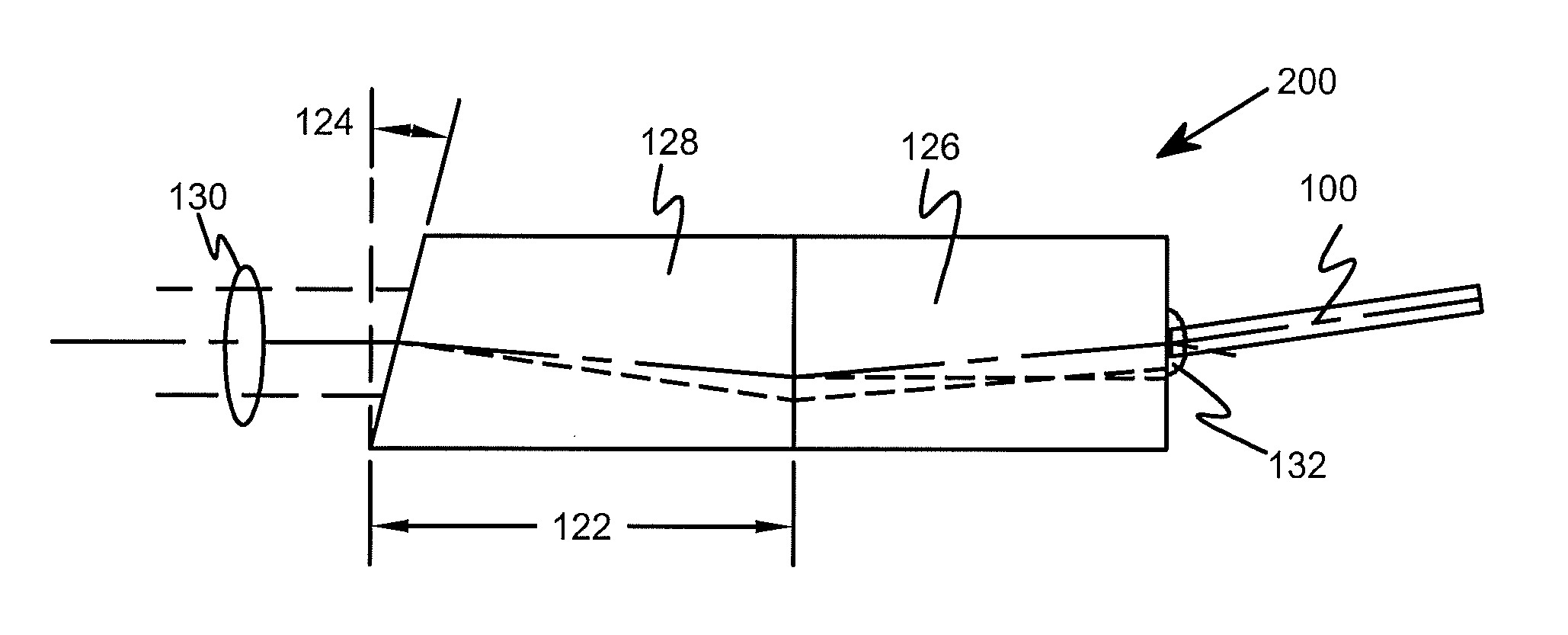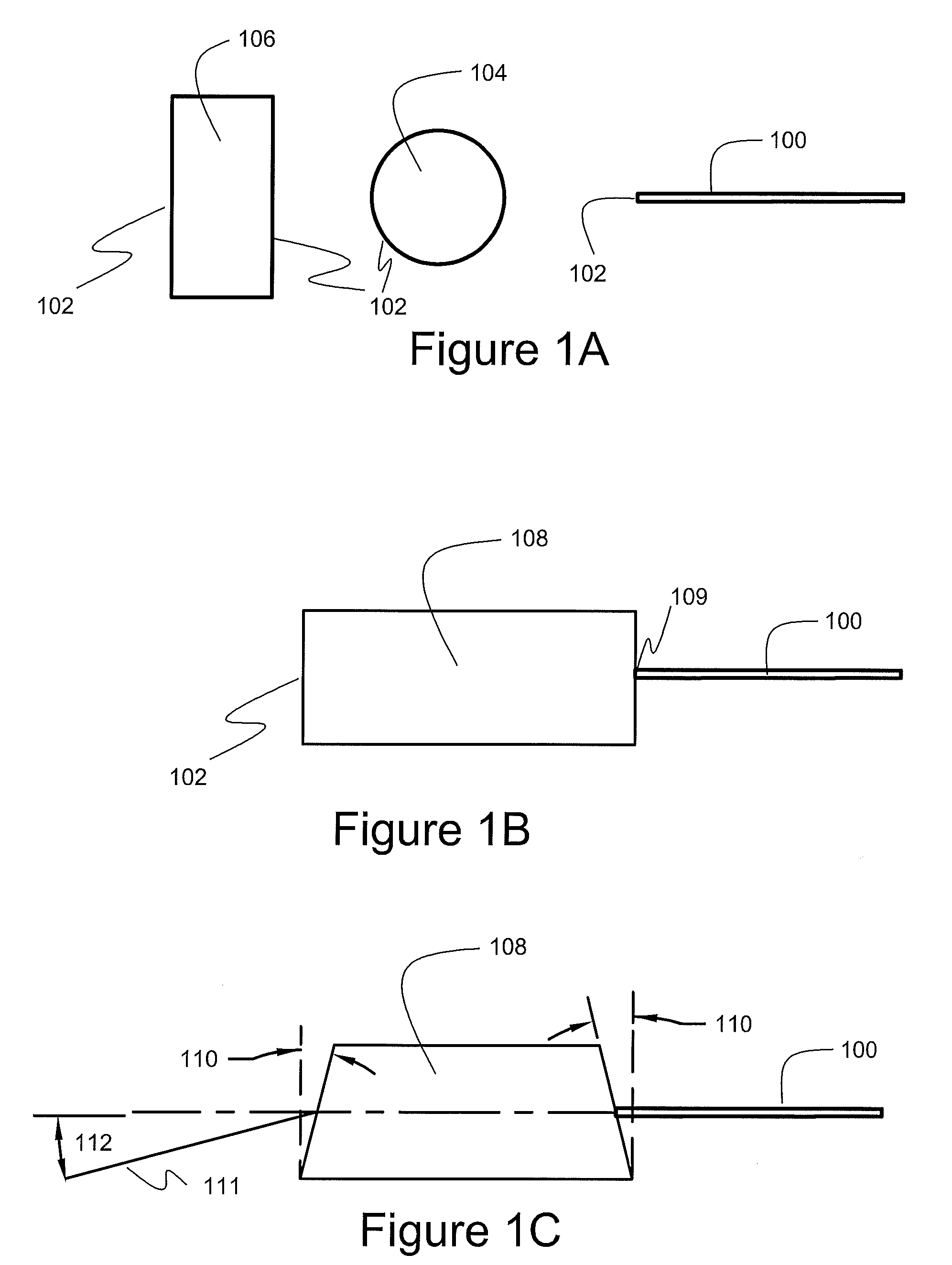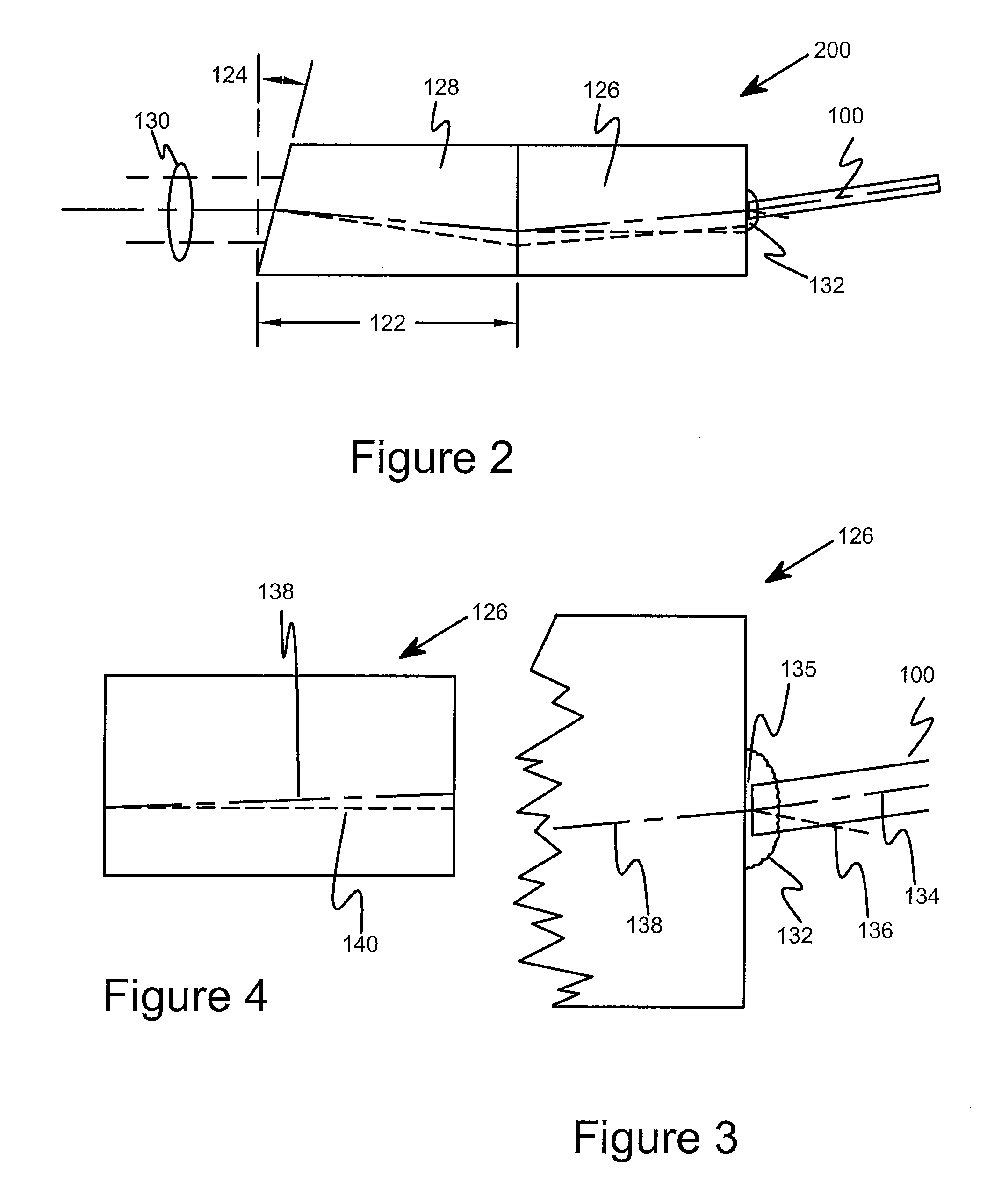Grin-lensed, tuned wedge waveguide termination and method of reducing back reflection caused thereby
a wedge waveguide and wedge waveguide technology, applied in the direction of lamination ancillary operations, instruments, chemistry apparatus and processes, etc., can solve the problems of high loss, inability to withstand extreme temperatures, chemicals or abrasion, and many of the ar coatings b>102/b> to be cured, etc., to achieve low insertion loss
- Summary
- Abstract
- Description
- Claims
- Application Information
AI Technical Summary
Benefits of technology
Problems solved by technology
Method used
Image
Examples
Embodiment Construction
[0026]It is realized herein that a quarter-pitch GRIN lens produces a primary beam that is fully spread as it exits the quarter-pitch GRIN lens. It is further realized herein that, because the primary beam is fully spread, a substantial fraction of its total energy cannot be captured and is therefore lost. It is realized herein that their reliance on of quarter-pitch GRIN lenses is, at least in part, why the conventional orthogonal and beveled GRIN-lensed collimators described in the Background above exhibit significant insertion losses. It is also realized herein that the acute disadvantages of quarter-pitch GRIN lenses in this regard apparently have not been appreciated in the prior art, because quarter-pitch GRIN lenses have many positive qualities in other applications and are therefore widely accepted and employed.
[0027]Consequently, it is still further realized herein that a GRIN lens having a greater-than-quarter-pitch would advantageously produce a primary beam that is conve...
PUM
| Property | Measurement | Unit |
|---|---|---|
| angle | aaaaa | aaaaa |
| insertion loss | aaaaa | aaaaa |
| length | aaaaa | aaaaa |
Abstract
Description
Claims
Application Information
 Login to View More
Login to View More - R&D
- Intellectual Property
- Life Sciences
- Materials
- Tech Scout
- Unparalleled Data Quality
- Higher Quality Content
- 60% Fewer Hallucinations
Browse by: Latest US Patents, China's latest patents, Technical Efficacy Thesaurus, Application Domain, Technology Topic, Popular Technical Reports.
© 2025 PatSnap. All rights reserved.Legal|Privacy policy|Modern Slavery Act Transparency Statement|Sitemap|About US| Contact US: help@patsnap.com



